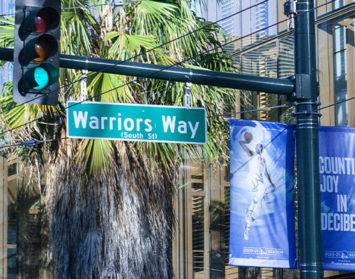While I’ve talked at great length in these biweekly columns about how important business and commercial tenants are to our local economy, I’ve not re-visited in quite a while the perilous situation we face in losing one of our region’s highest-profile tenants: The San Diego Chargers Football Club.
Some 18 months ago, I took keyboard in hand to express my rightful concern about the possibility that the Chargers would have to leave their Mission Valley home and look elsewhere for their home turf, including outside the region. As of that mid-May column, Mayor Jerry Sanders, perplexed about the inability to cobble together a deal to build a new stadium in his city, had loosened up the terms of the city’s agreement with the Chargers to allow the team to look at other county venues in a well-intended effort to at least keep the winning NFL franchise in the county.
It wasn’t too long before the city of Chula Vista signaled it would be interested in exploring the construction of a new stadium somewhere in its city boundaries. That South County city’s blue-collar neighbor, National City, also expressed interest in becoming the National City Chargers amid all sorts of regional snickering over that possible scenario.
Sometime later, Oceanside, to the north, indicated interest in helping the Chargers lure the team’s north-skewed fan base to its Goat Hill Golf Course site where fans and players alike could “tan their hide in Oceanside” — to paraphrase of that city’s four-decade-old city slogan.
National City soon dropped out of the picture once its City Council realized there was no space for a stadium. Oceanside eventually learned its site for a new stadium wouldn’t provide enough commercial space to make a “Goat Hill Stadium” pencil. Also lacking was sufficient community support – a small technicality, I suppose.
Back to Chula Vista, where interest now centers on two possible stadium locales: the bayfront site of an aged power plant and a 500-acre vacant parcel east of state Route 125 where plenty of land abounds for development to pay for the stadium costs.
Both venues may be technically viable, but they share one drawback: They ain’t in San Diego.
Aside from moving the Chargers to an off-center site at the bottom of the county, the notion of the team’s new hometown would surely evoke derision among fans and opponents alike. “Chula Chargers,” “Chulagers” and “Chuggers” immediately come to mind. Those who are fluent in Spanish also know that “chula” means “pretty,” “nice” or “graceful” — hardly words that conjure up an image of the Chargers as a fighting football machine.
Besides, that city has its hands full trying to overcome organized labor’s resistance to a billion-dollar bayfront hotel and convention center complex.
What continues to be abundantly clear in all this is that all parties involved, the city of San Diego, the Chargers and its fan base, need the team to stay in the city — specifically Mission Valley.
There’s more than civic pride involved here. The city has a major asset at stake in where the San Diego Chargers end up geographically. The 166-acre site on which Qualcomm Stadium sits in the heart of Mission Valley is worth hundreds of millions of dollars.
Whether the Chargers stay or go, we have a large obsolete concrete structure that will need to be torn down and replaced if the present venue is to accommodate anything more than the San Diego State Aztecs, disaster victims, or assorted destruction derbies. Without the Chargers, the stadium property will fall into disuse for the most part.
However, the devil is in the details. Neither the city nor the Chargers has found the financial means to build what it would take to accommodate a major league football team for the next several decades. What the city does have is the site and with some creative thinking, the possibility of leveraging that real estate into a solution that benefits the city and its citizenry, the Chargers organization, and the fans.
Let’s consider a general scenario in which, once the property is appraised, the city makes available a goodly share of that land to the Spanos family to re-develop, including replacing the stadium with a new NFL and Super Bowl venue. The city then receives tax revenues and development fees on what is now private property and the Spanos pay the city back the value of what was made available as the property they control is developed.
While this idea lacks specifics, it — or some version thereof — is at least worth pursuing. We haven’t seriously explored a partnership option between the city and Chargers to re-develop what is arguably one of the most precious real estate assets in the region. And we need to fairly soon. Time’s a wastin’!
Jason Hughes is founder of Hughes Marino, an award-winning commercial real estate company with offices across the nation. A pioneer in the field of tenant representation, Jason has exclusively represented tenants and buyers for more than 30 years. Contact Jason at 1-844-662-6635 or jason@hughesmarino.com to learn more.









